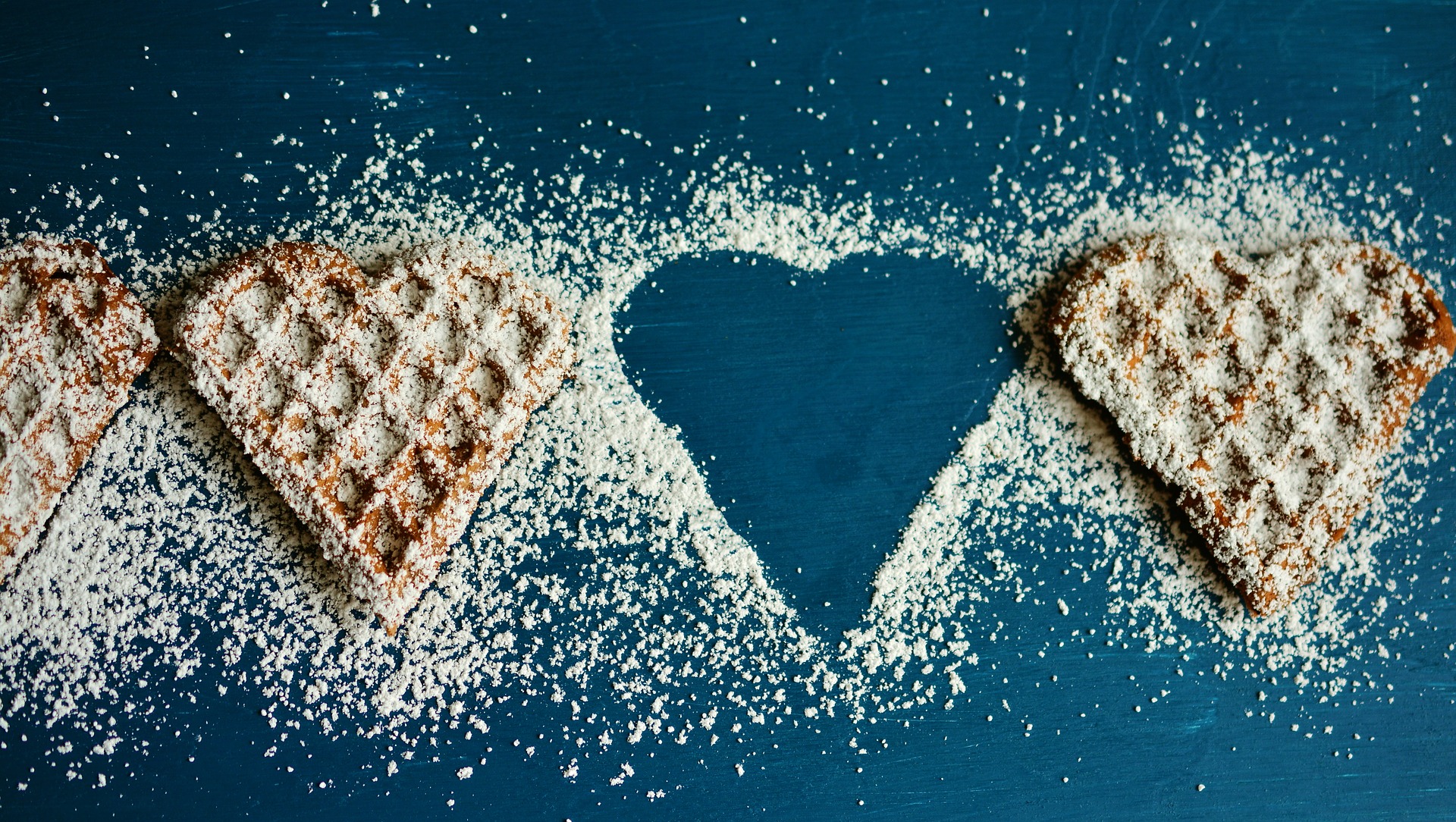 –by Emerging Mama Monica Reynolds [originally published on the author’s blog, November 14, 2017, just in time for the biggest food extravaganza of them all!]
–by Emerging Mama Monica Reynolds [originally published on the author’s blog, November 14, 2017, just in time for the biggest food extravaganza of them all!]
Just this past week, I discovered a new secret stash of food and food wrappers in my child’s bedroom. It wasn’t in the same place as the stash before, or the one before that, or…the one. before. that.
Secret stashes of food and food wrappers are a sad reminder that while looking beautiful and whole on the outside, my child’s insides and physiology are different from those of children who have had all of their basic needs consistently met.
I uncovered this past recent stash after realizing a cheeseburger that had been left on the kitchen counter, my hopeful lunch, had mysteriously vanished when I went upstairs to take a quick shower. Food vanishes in our home quite often. We do, after all, have seven residents under one roof, with five of them still growing. Two of us, at least, are hopeful to NOT grow anymore, which in theory at least, helps with the grocery bills.
So, while we do tend to plow through food in our house like Carson Wentz and Philadelphia Eagles’ offensive line is plowing through opponents this season, six of the seven of us don’t usually tend to swipe another’s lunch clear off the table when given three seconds to do so. Six of the seven of us engage food in rather healthy ways. Solid meals, healthy snacks, and occasional treats.
One of us, however, has some pretty significant scars on her/his physiology due to early childhood trauma, neglect, and what was likely extreme malnourishment. One of us, however, even though living for nearly 6 years with more than adequate nutrition, never once missing a meal, and being in a loving and secure home and community, still struggles at times with the long-term effects of food security, attachment, and trauma.
Six years later.
The math still doesn’t make sense to me. Doesn’t six years of healthy, secure living override two or three years of malnourishment and/or neglectful experiences? Apparently…not.
When it comes to food hoarding, which I should add, comes after the food stealing and usually some lying thrown in for good measure, there may or may not be identifiable triggers to help us understand “why. Sometimes I can figure out the triggers and other times there are no visible or apparent triggers at all. Trying to figure that part out has been a wild goose chase of sorts. I see it, I see it, I see it, I can put my finger on it, nope…it’s gone.
One time while in seminary, my colleague and friend, who often spends time care-taking for her elderly aunt, told me that she had recently found a chicken drumstick in Aunt Marge’s dresser drawer. This made me laugh out loud, and also provided a teeny bit of solidarity.
Sometimes what I find actually IS a chicken drumstick thrown under the bed. Maybe my child and Aunt Marge are sharing secrets? Other times it’s a cheeseburger hidden between books on a shelf. More often, however, it is an unusually large amount of empty wrappers, signifying an episode that followed the dash-binge-hide the evidence pattern.
Just recently, I discovered an open bag of cupcake mix, apparently the sugary powder mix being eaten mouthful by mouthful; only given away by the fact that it was girl scout thin mint mix and the smell was discernible from down the hall.
Sigh.
November is National Adoption Month.
With that, I need to say and say again that choosing to grow our family through adoption is something I would never change. Not in a million. Not even on the very worst, “horrible, no good, very bad days.” And when I say grow our family, I mean that in terms of numbers, yes, but also in terms of spiritual maturity, depth, connection, wisdom, vulnerability, and all the ways in which a family can grow.
In fact, I think it’s more accurate to say that we have not grown our family through adoption, but rather that adoption has grown us as a family.
Adoption, all adoptions, as I like to point out in nearly every article, always begin with a loss. There is no getting around that. Adoption loss, even when adoption is in the best interest of all human beings, begins with a loss and for many, a traumatic loss at that.
THE most primary and basic human connection we have as human beings, where baby and mother are literally and physically connected, where our amazing bodies feed, nourish, comfort, and protect our babies from in utero on; that primal bond that begins inside the womb and often carries outside the womb, even if less than perfect, is still broken, and the connection severed.
All at once, the sights, smells, tastes, and everything familiar is gone. Often with little to no transition, and many times through closed procedures where birth mother and baby never meet again.
Now, if the connection does continue out of the womb, even in horrible conditions, there is still a human bond at work. If there is lack of basic resources, such as food, as in the case of our child, then all sorts of messages are being sent from the brain to the body and back. Secure attachment cannot form. Bodies cannot progress beyond the survival state. Brains, therefore, are kept locked in survival mode, hypervigilant states, or heightened emotional response reactor mode. As such, we should expect to see behaviors such as food hoarding, that leave us baffled, if not down right frustrated.
Hell, my child was caught steeling pancakes from the school cafeteria. Less than 20 minutes after he just ate a full breakfast at home. That turned out to be a “fun” conversation to have with school administrators actually because it occurred less than one week after I had a meeting with the IEP team and had explicitly stated that my child cannot, cannot, cannot be left alone or unsupervised with food.
She’ll steal your heart and your hamburger, y’all. I wasn’t joking.
What can be done?
Well, I like what the Institute for Attachment and Child Development says in this article. Basically, we need to focus primarily on the child and not the behavior. This is critical for any and all of us parenting attachment challenged children. If we focus on the behavior, well, I’m pretty sure that will drive us crazy if not significantly shorten our lives. For realz.
Focusing on the child reminds us that the behavior is often stemming from place of deep hurt, pain, and brokenness. Even if we cannot fix those places of the deepest of hurts, we can love our children. Yes, the behavior matters. Yes, there are consequences. Yes, if my child steals pancakes from a grocery store when he grows up, he could end up in jail. We can and do talk about all these things. More than most probably know. And still, in the heat of the moment, when frustration level is the highest, I remind myself over and over that my child does not even know why she does the things that she does.
How confusing and scary that must be for him!
To help with all of our sanity and healing, and to make me feel like more of a mom and less of an investigator, there are some tangible things we do in our home to limit the opportunities for grab and goes.
- We keep the child’s bedroom simple. A bed, bookshelves, desk, simple toy bins, and clothing in closet. With a simple layout and specific things in specific places, i.e. book on shelves, toys in bins, clothing hanged up in closet, and nothing left on the desk, floor, or shelves, there are fewer places to hide food. This helps my child to slow down and think and helps me when I go in to look.
- I make sure my child drinks water throughout the day, has three full meals, and two healthy snacks. Keeping meal and snack time regular and healthy helps her know what’s coming next and keeps her blood sugar regulated, which in turn helps to regulate her thoughts and keep anxiety down.
- I stay in regular contract with teachers, coaches, and any adults who are responsible for my child’s safety and well-being. I am honest with them about the realities of early childhood trauma and the long-term effects of malnourishment. I share facts and resources, but also real life examples of how this plays out. I warn them that he may steal the pancakes, and then remind them when he does steal the pancakes that he wasn’t supposed to be alone with food. This is sometimes embarrassing and oftentimes hard work. It is not fun. However, because my child’s brain sometimes relapses into survival or hypervigilance mode, he needs the extra scaffolding from trusted and caring adults.
For those living this reality too, what would you add? Please add your thoughts and suggestions in the comments.
Stealing food, hoarding, and lying are less than stellar realities of this journey. And yet, little by little, progress is being made. Will my child’s brain-body connections ever mirror those a child who had every single need consistently and lovingly met from womb to the golden zero-three stage? Who knows? Likely not.
However, focusing on the small wins, the large strides that have been made, the fact that my child is a gift from God, and that my healing is somehow bound up in hers, is truly all I need each day to keep fighting the good fight.
Other days, taking the respite we all need is ok too. Frequent breaks are needed and not a luxury.
And maybe, just maybe, if I can convince my child to simply LEAVE THE THIN MINTS ALONE, we can all call it a win for the day.
With Love, Faith, and Sweat,
Another Mama in the Ring



